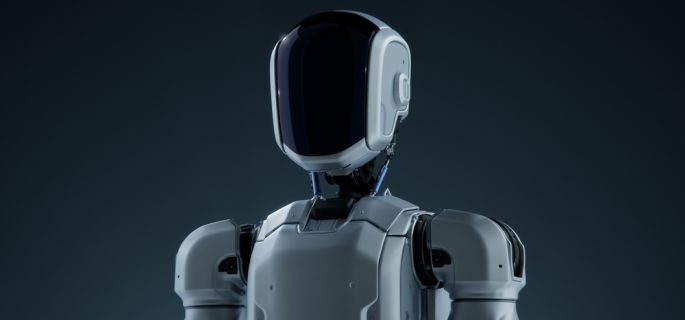China’s Pivot to Humanoid Robots Sparks a High-Stakes Global Showdown

Source: Shutterstock
The emergence of DeepSeek's R1 shook up the market, wiping more than $1 trillion from the U.S. stock market and sending shockwaves through the tech world. It sent AI companies scrambling to reassess their strategies and respond to the advancements. The launch also underscored that the AI race between the U.S. and China is tighter than many had anticipated.
The two tech superpowers are now also racing for a new prize: AI-powered humanoid robots. These machines are not only built to look like humans but also use advanced AI to learn, adapt, and perform complex tasks, from factory work to customer service.
So, what’s the big deal about them? Haven’t they been there for a while? Well, unlike traditional robots, these machines tap into the power of AI to think, learn, and interact more intelligently than ever before. Rapid advances in AI since 2022 have turbocharged the development of humanoid robots. As AI becomes more powerful and sophisticated, so do these robots. Additionally, as AI runs into data limits, humanoid robots offer companies a way to transform AI itself.
Apple, Meta, Tesla, and several other key players in the industry have entered the race and are gearing up for the next big tech rivalry.
Speaking at the 8th Future Investment Initiative conference in Riyadh, Saudi Arabia, Elon Musk shared that he expects at least 10 billion humanoid robots by 2040, and they would be cheaper than cars. He also shared that Tesla’s humanoid robots “will exceed that of everything else at Tesla combined” and make it a $25 trillion company.
Meta recently launched an AI-powered robotics division within its Reality Labs. In an internal company memo, Meta Chief Technology Officer Andrew Bosworth shared that the new division would focus on research and development involving "consumer humanoid robots with a goal of maximizing Llama's platform capabilities."
While we expect more U.S. tech companies to turn their attention to humanoid robots, all eyes are on China. Questions remain about some of the claims surrounding DeepSeek R1’s development and performance, however, there is no doubt that it has highlighted China as one of the front runners in the AI race.
Reports indicate that as many as 27 humanoid robot models were unveiled at Beijing’s World Robot Conference in August 2024. Last week, China launched its first heterogeneous humanoid robot training center spanning over 53,000 square feet, claiming the facility can train more than 100 humanoid robots at once.
These robots are being powered by vast datasets. Chinese robotics firm AgiBot unveiled AgiBot World, an extensive open-source dataset designed to advance AI models for humanoid robots. AgiBot claims that its dataset is “10 times more long-range navigational data and covers 100 times more scenarios for humanoid robots” compared to other rivals, such as Google LLC’s Open X-Embodiment.
China has a major edge over the U.S. (and most other countries) in the race of humanoid robots: manufacturing at scale. As the “factory of the world”, China is a manufacturing powerhouse, and it knows that. Humanoid robots were identified early as a key focus area for China. The Ministry of Industry and Information Technology included humanoid robots as a priority when it released its “Guiding Opinions on the Innovation and Development of Humanoid Robots” in 2023.
Leveraging a well-established EV supply chain, Chinese companies can produce humanoid robots at lower costs while integrating advanced technologies like lidar, depth cameras, and high-efficiency battery packs that are used in EVs. This technological overlap allows Chinese firms like BYD, XPeng, and Nio to transition into the robotics industry easily.
The U.S. will have to focus on its advantages, including access to cutting-edge technologies at home. After all, a humanoid robot’s value comes largely from its software “brain,” and US technologies, such as NVIDIA hardware, remain a top choice for advanced AI, even in China. The U.S. also leads in AI research, though China remains secretive about its own AI advancements, making the true gap between them unclear.
The competition in humanoid robotics could be one of the most critical tech races of the next decade, and Washington would have played a key role. It may need to revisit some of its industrial strategies or policies to support domestic robotics development.













